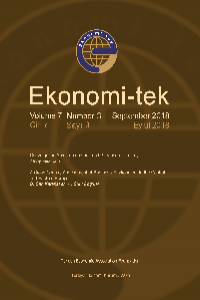Post-Keynesian Theory and a Policy for Managing Financial Market Instability and its Relevance to the Great Recession
For more than three decades, orthodox economists and policymakers, motivated by some variant of classical economic theory, have insisted that (1) government regulation of markets and large government spending policies are the cause of all our economic problems and (2) ending big government and freeing especially financial markets from government regulatory controls is the solution to those problems. In response, governments around the world have been freeing up financial markets and trying to reduce their involvement in economic matters. Yet, in 2007-8, the global economy experienced an alarming financial market meltdown that led to the Great Recession in which we are still enmeshed. To those who profess the belief that free markets produce socially optimum solutions, this paper explains why the facts do not support this conclusion. Keynes’s liquidity theory and the Post-Keynesian theory that developed from Keynes’s analysis can explain (a) why free financial markets cannot be efficient and (b) how to develop policies and institutions to reduce the possibility of financial market instability.
Anahtar Kelimeler:
Post-Keynesian theory, efficient market theory, financial market instability, uncertainty, international payments system, international monetary clearing union
Post-Keynesian Theory and a Policy for Managing Financial Market Instability and its Relevance to the Great Recession
For more than three decades, orthodox economists and policymakers, motivated by some variant of classical economic theory, have insisted that (1) government regulation of markets and large government spending policies are the cause of all our economic problems and (2) ending big government and freeing especially financial markets from government regulatory controls is the solution to those problems. In response, governments around the world have been freeing up financial markets and trying to reduce their involvement in economic matters. Yet, in 2007-8, the global economy experienced an alarming financial market meltdown that led to the Great Recession in which we are still enmeshed. To those who profess the belief that free markets produce socially optimum solutions, this paper explains why the facts do not support this conclusion. Keynes’s liquidity theory and the Post-Keynesian theory that developed from Keynes’s analysis can explain (a) why free financial markets cannot be efficient and (b) how to develop policies and institutions to reduce the possibility of financial market instability.
Keywords:
Post-Keynesian theory, efficient market theory, financial market instability, uncertainty, international payments system, international monetary clearing union,
___
- Abel, A. B. and B. S. Bernanke, (1992), Macroeconomics, Reading, Addison Wesley.
- Adelman, Irma, (1991), “Long-Term Economic Development”, Working Paper No. 589, California Agricultural Experiment Station, Berkeley California.
- Arrow, K. J. and F. H. Hahn, (1971), General Competitive Equilibrium, San Francisco, Holden Day.
- Colander, D. C and H. Landreth, (1996), The Coming of Keynesianism to America, Cheltenham, Elgar.
- Davidson, P., (1987-8), “A Modest Set of Proposals for Resolving the International Debt Problem”, Journal of Post Keynesian Economics, 10 (2), pp. 323-338.
- Keynes, J. M., (1933), “National Self-Sufficiency”, reprinted in D. Moggridge, ed., The Collected Writings of John Maynard Keynes, 21, (1982), London, Macmillan.
- Keynes, J.M., (1936), The General Theory of Employment, Interest, and Money, Macmillan.
- Keynes, J. M., (1941), “Post-War Currency Policy”, reprinted in D. Moggridge, ed., The Collected Writings of John Maynard Keynes, 25, (1980), London, Macmillan.
- Lucas, R. E., (1981), “Tobin and Monetarism: A Review Article”, Journal of Economic Literature, 34 (2), June, pp. 558-567.
- Samuelson, Paul A., (1969), “Classical and Neoclassical Theory”, in R.W. Clower, ed., Monetary Theory, Penguin Books, London.
- US Bureau of Census, (1959), The Statistical Abstract of the United States, 1959. Washington, D. C.
- Williamson, John, (1987), “Exchange-Rate Management: The Role of Target Zones”, American Economic Review, Papers and Proceedings, 77 (2), pp. 200-204.
- ISSN: 2146-6173
- Yayın Aralığı: Yılda 3 Sayı
- Başlangıç: 2012
- Yayıncı: Türkiye Ekonomi Kurumu Vakfı
